
— Kris Ashton
The Ford Ranger ute has been one of the Australia’s top selling vehicles for more than a decade. Good looks, on-road drivability, off-road prowess, and superb turbo-diesel engine choices have made it a favourite among tradies and caravanners alike.
But with the federal government introducing the New Vehicle Efficiency Standard (NVES) manufacturers have been impelled to find ways to lower fuel consumption. Ford’s solution is the Ranger plug-in hybrid electric vehicle (PHEV), which combines a 2.3-litre turbo-petrol engine with an electric motor. It can travel on EV power for a claimed 49km and offers a few party tricks – like being able to power tools on a worksite – but will it pass muster in the real world?
The Ford Ranger PHEV range starts with the XLT for $71,990 plus on road costs. From there it ascends to the Sport ($75,990), Wildtrak ($79,990) and top-spec Stormtrak ($86,990).
This means the PHEV XLT is about $3000 more expensive than the comparable XLT running Ford’s 3.0-litre turbo-diesel V6. Currently the PHEV is only available in a dual cab body style; Ford says it will examine the possibility of introducing other body styles down the track.
Ford is one of the first brands in Australia to offer a plug-in hybrid dual-cab ute, although both the BYD Shark and GWM Canon Alpha have beaten Ford to market. The BYD Shark 6 is substantially cheaper than the Ranger, starting at $57,900 before on road costs. The Shark also has around twice the range in EV mode and boasts higher combined outputs from its powertrain at 321kW/650Nm versus 207kW and 697Nm in the Ford.
The GWM Cannon Alpha also trumps the Ranger for power thanks to outputs of 255kW/648Nm and is cheaper too, with a limited time deal seeing pricing kick off at $60,490 drive-away for ABN holders before June 30 2025.
The Ranger PHEV is covered by Ford’s five-year/unlimited kilometre warranty, while the battery gets a separate eight-year/160,000km warranty. Service intervals are every 12 months or 15,000km, and the first five services cost $399 each.
Not every dealer will be able to service the Ranger PHEV, although Ford says it will have more than 150 ‘EV dealers’ who can by the end of 2025.
There’s not a lot to distinguish the Ford Ranger PHEV interior from its diesel cousins. The most notable difference is the 230-volt power socket in the rear of the centre console (more on that and the two power points in the tray below).
Otherwise, it’s exactly what fans have come to expect from a Ranger – a satisfying compromise between the aesthetic and utilitarian.
Standard kit on the Ranger PHEV XLT includes 17-inch alloys wheels, keyless entry and start, an electric parking brake, dual- zone climate control, a 12-inch central infotainment screen, eight-inch digital instrument cluster, wireless Apple CarPlay/Android Auto, digital radio, six-speaker audio, and adaptive cruise control.
Stepping up to the Sport adds 18-inch alloy wheels, LED headlights, puddle lamps on the side mirrors, sports bar and other exterior accoutrements, wireless phone charging, privacy glass, leather accented trim, eight-way power adjustment for the driver’s seat, heated front seats, and an alarm system.
Wildtrak trim brings matrix LED headlights with auto high beam, roof rails and unique exterior styling touches including 18-inch alloy wheels, aluminium tie down rails in the tray and a powered roller shutter, ambient interior lighting, a 10-speaker Bang & Olufsen audio system, powered driver and front passenger seat adjustment, Wildtrak-branded leather seats, a 360-degree camera, and Ford’s Pro Trailer Back-up Assist as standard.
The top-spec Stormtrak has all the goodies on the Wildtrak but can be had in an exclusive colour (Chill Grey) and gets unique exterior styling touches, 18-inch alloy wheels with Chill Grey accents, a flexible rack and cargo management system in the tray, Stormtrak seats, and grey and gloss-black interior trim.
All PHEV variants sport the full-time 4WD system introduced on the 3.0-litre turbo-diesel Ranger, which has an electronically controlled two-speed transfer case and 2H, 4A, 4H and 4L settings, plus there’s a rear diff lock for more challenging off-road situations. Several drive modes are available to match the conditions: Normal, Eco, Sport, Tow/Haul, Slippery, Mud/Ruts and Sand.
Not only do the wheels on the PHEV models have unique styles, they are also wider than those on diesel variants, with new lip mouldings and bespoke tyres designed to cope with the increased weight from the battery and electric motor, and to allow for payloads between 808kg (Stormtrak) and 973kg (XLT).
At the time of writing, the PHEV variant of the Ford Ranger has not run the ANCAP gauntlet, but at the launch Ford confirmed it would likely be crash tested. In 2022, all Rangers except the Raptor were awarded a five-star rating.
As well as nine airbags, the Ranger PHEV’s driver assistance technology includes blind spot monitoring with cross traffic alert and trailer coverage, evasive steering assistance, lane-keeping assistance with road edge detection and driver alert system, pre-collision assistance with AEB, roll stability control, trailer sway control, reverse braking assistance, and front and rear parking sensors.
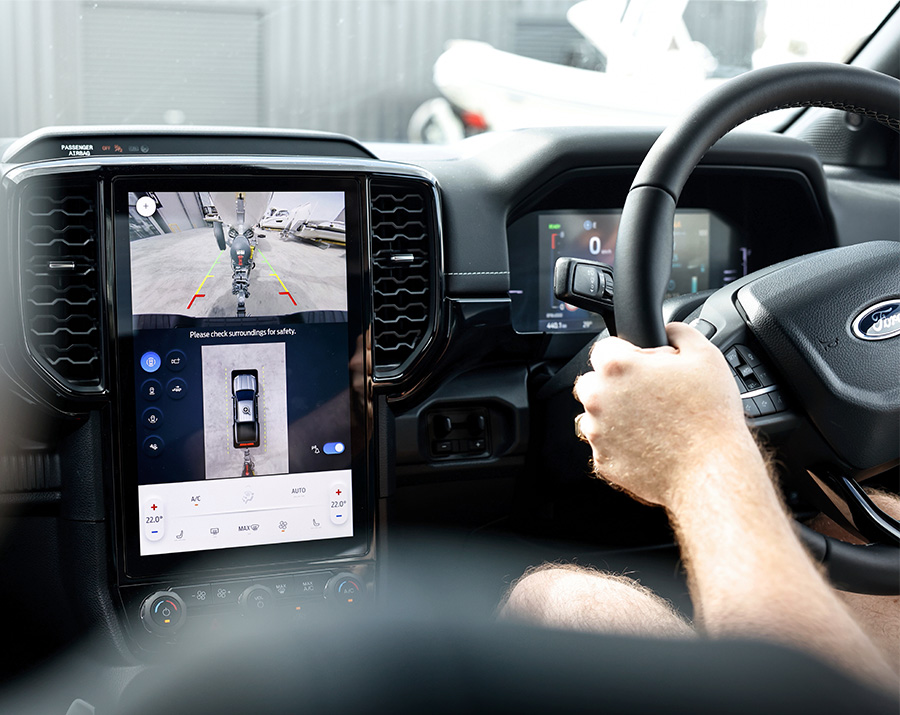
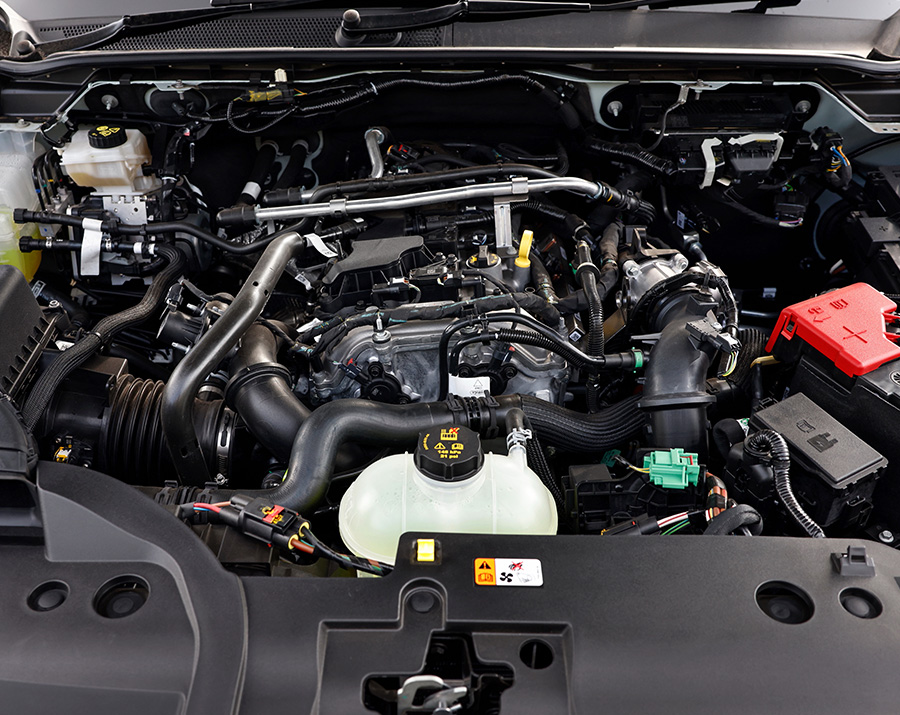
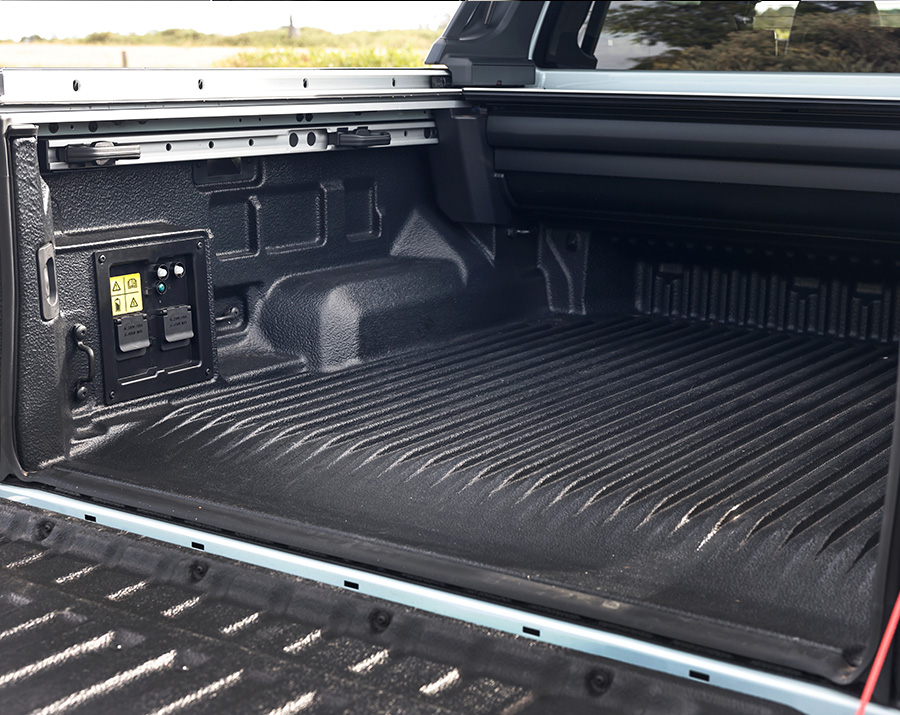
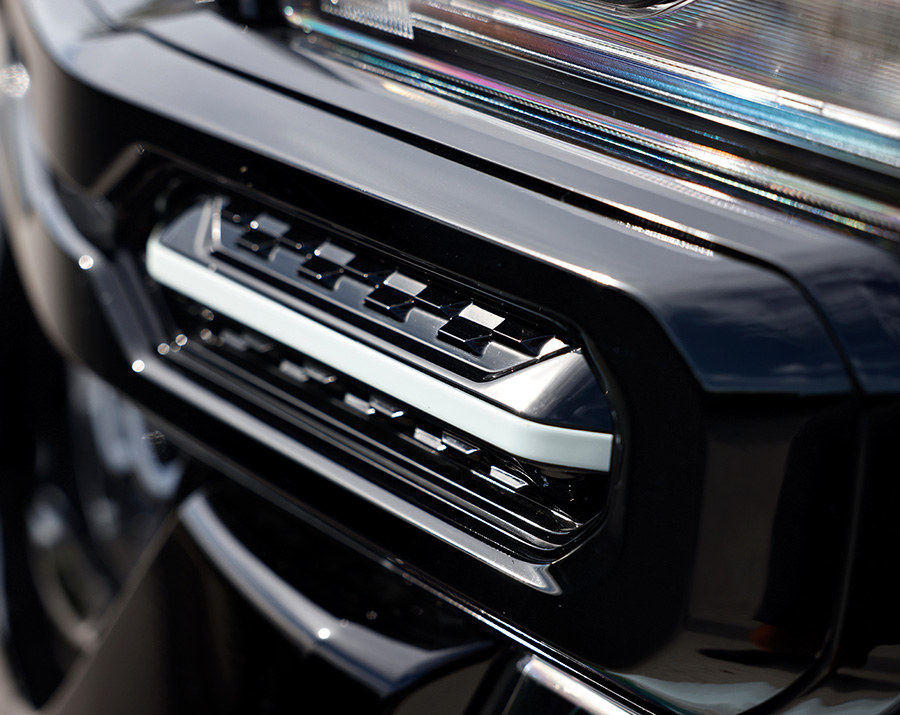

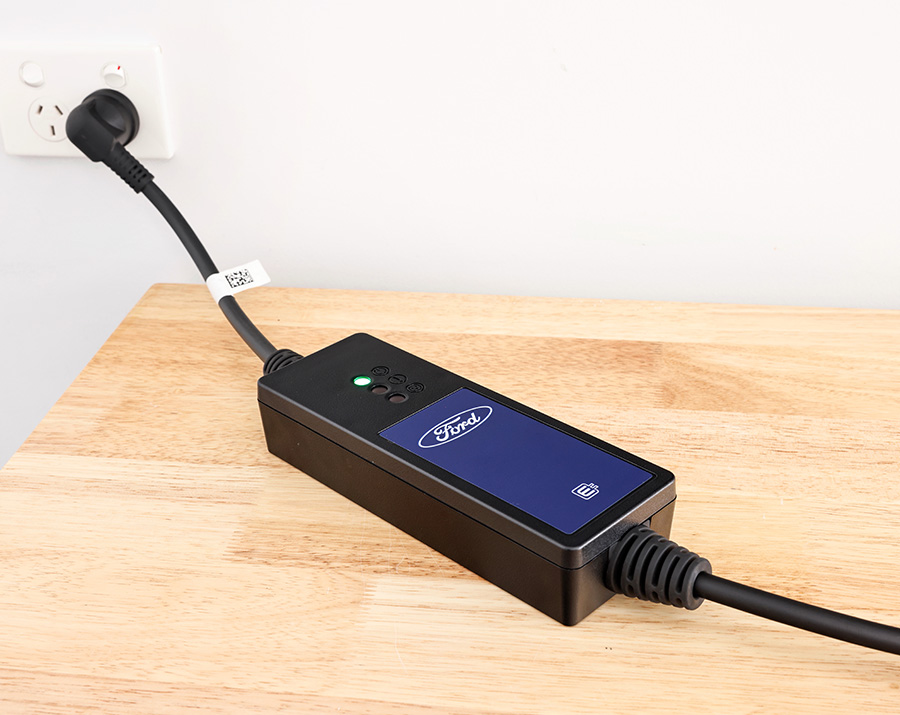
Under the bonnet is Ford’s 138kW/411Nm 2.3-litre EcoBoost four-cylinder petrol engine (which, in Australia, has seen duty as a performance unit, powering cheaper versions of the Ford Mustang and the now-discontinued Ford Focus RS).
It works in tandem with an electric motor (75kW/300Nm) powered by an 11.8kWh battery which sits between specially engineered frame rails underneath the load box. As a system this produces 207kW and 697Nm, giving the PHEV the highest torque figure of all Rangers (and only the 3.0-litre twin-turbo V6 Raptor produces more power).
A reconfigured version of Ford’s venerable 10-speed automatic gearbox, called a ‘modular hybrid transmission’, integrates the motor between the engine and transmission, allowing for 4WD in EV mode. Very mild regenerative braking is also incorporated into the transmission to prolong battery charge.
The Ford Ranger PHEV has four drive modes for the hybrid system: Auto EV, EV Now, EV Later and EV Charge (selectable via a button on the centre console). Auto EV is designed for everyday driving and switches between electric and petrol to best suit the driving situation.
In EV Now the Ranger drives on electric power alone. EV Later switches the vehicle to ICE only and preserves the existing charge in the battery. In EV Charge mode, the petrol engine provides propulsion and charges the battery.
Ford claims that in EV Charge mode the engine can power up the battery in approximately two hours, and the figures we noted on the Ranger’s energy monitor suggested 2.5 hours is a realistic expectation.
The brief to Ford engineers was that the Ranger PHEV had to be able to do everything the diesel variants could while using less fuel. This meant 3500kg braked towing, no compromise on off-roading ability or ruggedness, and a full-size spare tyre as a no-cost option (an inflator kit is standard on all but the Stormtrak).
As well as special frame rails to house the battery, the PHEV has additional underbody armour to protect it. Subsequently, the lightest PHEV, the XLT, weighs 2527kg (nearly 300kg more than its diesel counterpart) and this is immediately evident during initial take off, when bringing the vehicle to a stop, and from its more planted feel with an unladen tray.
The digital gear-shifter’s ergonomics and operation leave a bit to be desired, but otherwise it’s hard to fault Ford’s interfaces. The Ranger is arguably the most car-like of all the numerous utes on the road today and the PHEV is no different when it comes to handling, as composed and level as a high-riding 4x4 could hope to be.
The Ranger’s ride is at the firmer end of the scale among 4x4 utes and the seats are pretty firm compared to those in competing vehicles. While the interior is well insulated from sound, it is prone to wind noise at highway speeds.
Putting the Ranger PHEV into pure EV mode and driving without the familiar diesel rumble (and indeed any engine noise whatsoever) is a surreal experience. With 300Nm on tap the electric motor has no trouble getting the Ranger off the mark and while 75kW isn’t a lot, it’s more than enough to keep the 2500kg-plus beast rolling along.
The PHEV’s EV system also has the grunt to tackle basic off-road duties if required, successfully climbing a 50 per cent gradient at the AARC facility in Anglesea, Victoria. In the event the battery should run out of charge during a climb, the Ranger can kick over to petrol power without missing a beat.
Ford demonstrated the Ranger PHEV’s ability to moonlight as a power point, plugging into it its 15-amp/230-volt tray sockets a pie warmer, a jaffle iron and a Nespresso coffee machine (the interior socket is only 10-amp). If you really want to get into the weeds, Ford’s Pro Power Onboard software will show you how much voltage your power tool (or blender) is drawing from the battery.
There is one arrow missing from the PHEV’s electric quiver – DC fast charging. Ford’s research indicated the average Ranger owner’s daily commute was only 40km, so a smaller battery seemed a worthwhile compromise to retain its off road and towing capabilities.
Ford’s limitations on the Ranger’s electrification have certainly paid dividends where it matters. We spent two days putting a Ranger PHEV fitted with all-terrain tyres through its paces at Anglesea and the Lederberg facility outside Melbourne and it didn’t put a foot wrong, negotiating steep pebbled hillclimbs, slippery mud sections and shallow water crossings. The underbody armour even got a workout from an unseen rock. With the rear diff lock and 4L engaged, it makes even a weekend warrior look unstoppable.
Ford’s claim of 49km pure electric range, however, seems optimistic – according to the trip meter on one of the test vehicles, the PHEV averages around 36km from a full charge. Enough to get most tradies to and from a worksite each day, perhaps, but not for the boss running from site to site all day long.
While driving in EV Charge mode can replenish the battery, you could argue that defeats the purpose of having a PHEV, as the car is acting as its own generator. With no DC fast charger option, that leaves plugging it into a wall socket to charge overnight, which takes nearly seven hours with a 10-amp connection. Fine if your beloved Ranger lives in the garage, less convenient if you have to park it in the driveway or on the street.
As a feat of engineering, the Ford Ranger PHEV can’t help but impress. Fitting it with a high-tech hybrid system while retaining its most agreeable characteristics and keeping the asking price out of the ionosphere is a notable achievement. The ability to run power tools and appliances can only heighten its appeal to tradies and those looking to go bush.
The acid test will be real-world economy. Given the Ranger PHEV doesn’t even have the pure electric range of the 2013 Mitsubishi Outlander PHEV, if it can’t make good on (or at least approach) its 2.9L/100km fuel consumption claim, everything else will amount to gimmickry. Open Road will run a fuel consumption test on it in the near future.
What we liked:
What could be better: